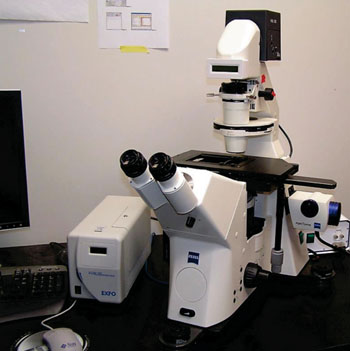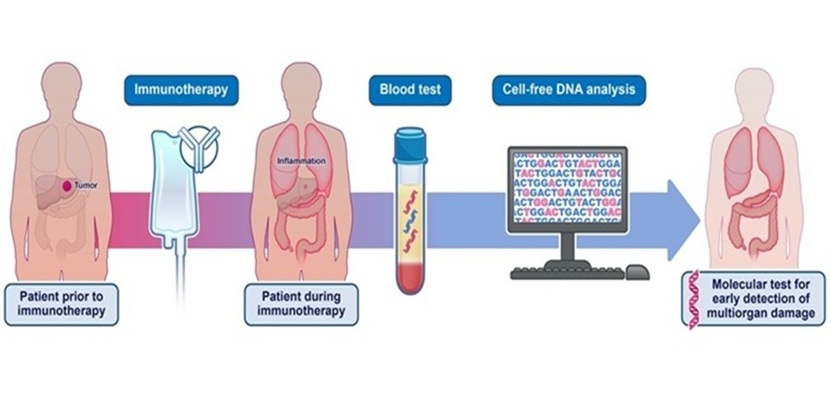Biomarker Identified for Basal-Like Breast Cancer
By LabMedica International staff writers
Posted on 12 Aug 2015
Basal-like breast cancer (BLBC) is an aggressive form of breast cancer and is often referred to as triple negative, which means it is not responsive to the common medical therapeutics, and is more likely to metastasize.Posted on 12 Aug 2015
Interleukins (IL) comprise a superfamily of pleiotropically acting cytokines that are present in the tumor microenvironment and are implicated in a wide variety of immunomodulatory functions, including cell maturation, proliferation, migration, and adhesion.

Image: The Zeiss Axiovert 200M inverted microscope (Photo courtesy of Michigan Technological University).
Scientists at the Boston University Medical Center (Boston, MA, USA) working in conjunction with those at the University of Cyprus (Nicosia, Cyprus) compared the markers on the surface of the cancer cells to gene expression profile of breast tumors deposited by scientists in international public databases. An unbiased approach using gene expression profiling of a BLBC progression model and in silico leveraging of pre-existing tumor transcriptomes were used to uncover metastasis-promoting genes.
The investigators used various techniques including breast cell cultures; gene expression microarray analysis was followed by in vitro validation and cell migration assays to elucidate the downstream molecular pathways involved in this process. Chemotaxis migration assays were performed and counted by using an Axiovert 200M inverted microscope (Carl Zeiss; Oberkochen, Germany). Real-time polymerase chain reaction (PCR), Western blots and immunological assays were also performed.
The scientists found that a molecule named Interleukin-13 receptor subunit alpha-2 (IL13Rα2) was abundant in metastatic or late-stage BLBC. When they looked at publically available data on patients, they were able to predict the likelihood of progression-free survival based on whether the cancer cells had high levels of IL13Rα2. The group also discovered that a subtype of BLBC that tended to spread to the lungs quickly had high IL13Rα2 levels. High levels of Signal transducer and activator of transcription 6 (STAT6) and Tumor protein p63 (TP63) expression were associated with longer distant metastasis-free survival of patients with breast cancer.
Sam Thiagalingam, PhD, associate professor of genetics and genomics, and coauthor of the study, said, “This discovery offers a glimmer of hope for patients stricken with BLBC. Personalized cancer therapies could be developed by targeting breast cancer cells that express copious levels of IL13Rα2.” The study was published on July 27, 2015, in the journal Breast Cancer Research.
Related Links:
Boston University Medical Center
University of Cyprus
Carl Zeiss







 Analyzer.jpg)






